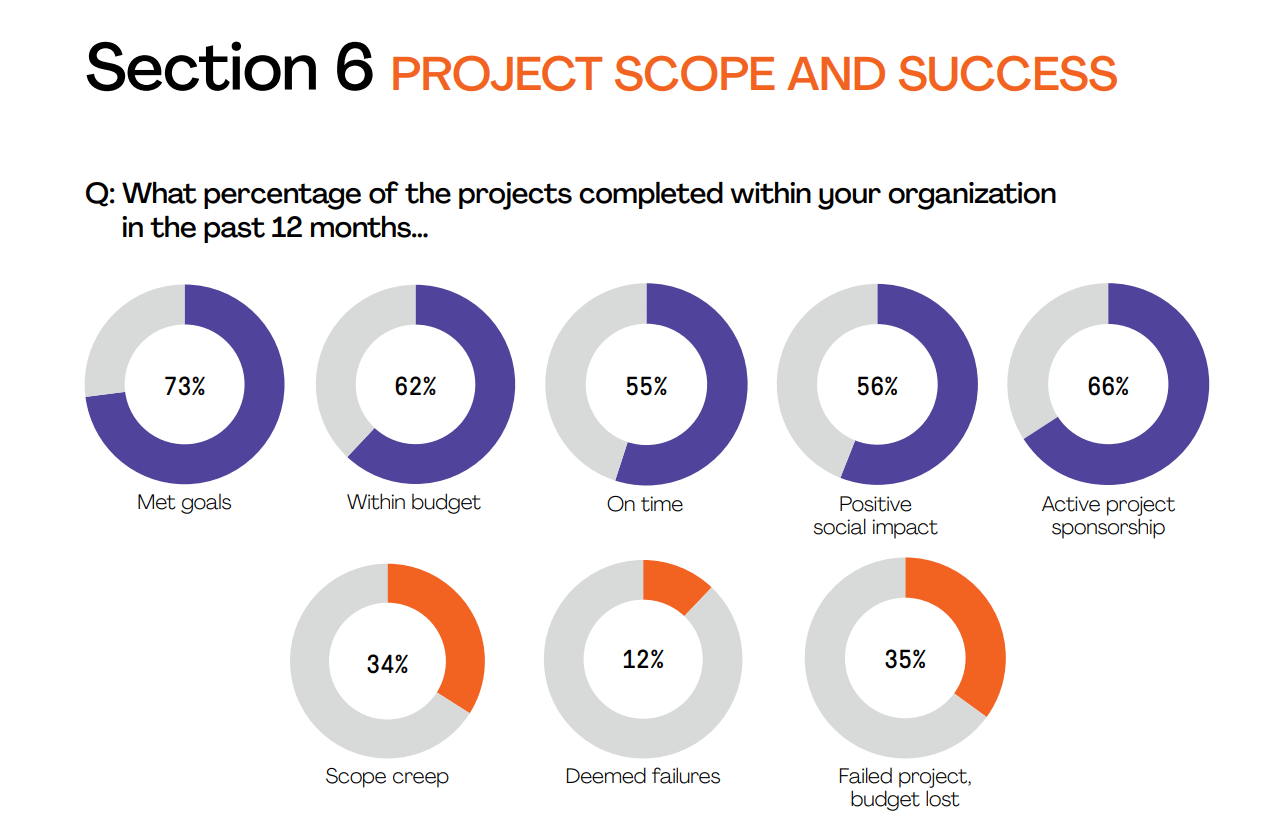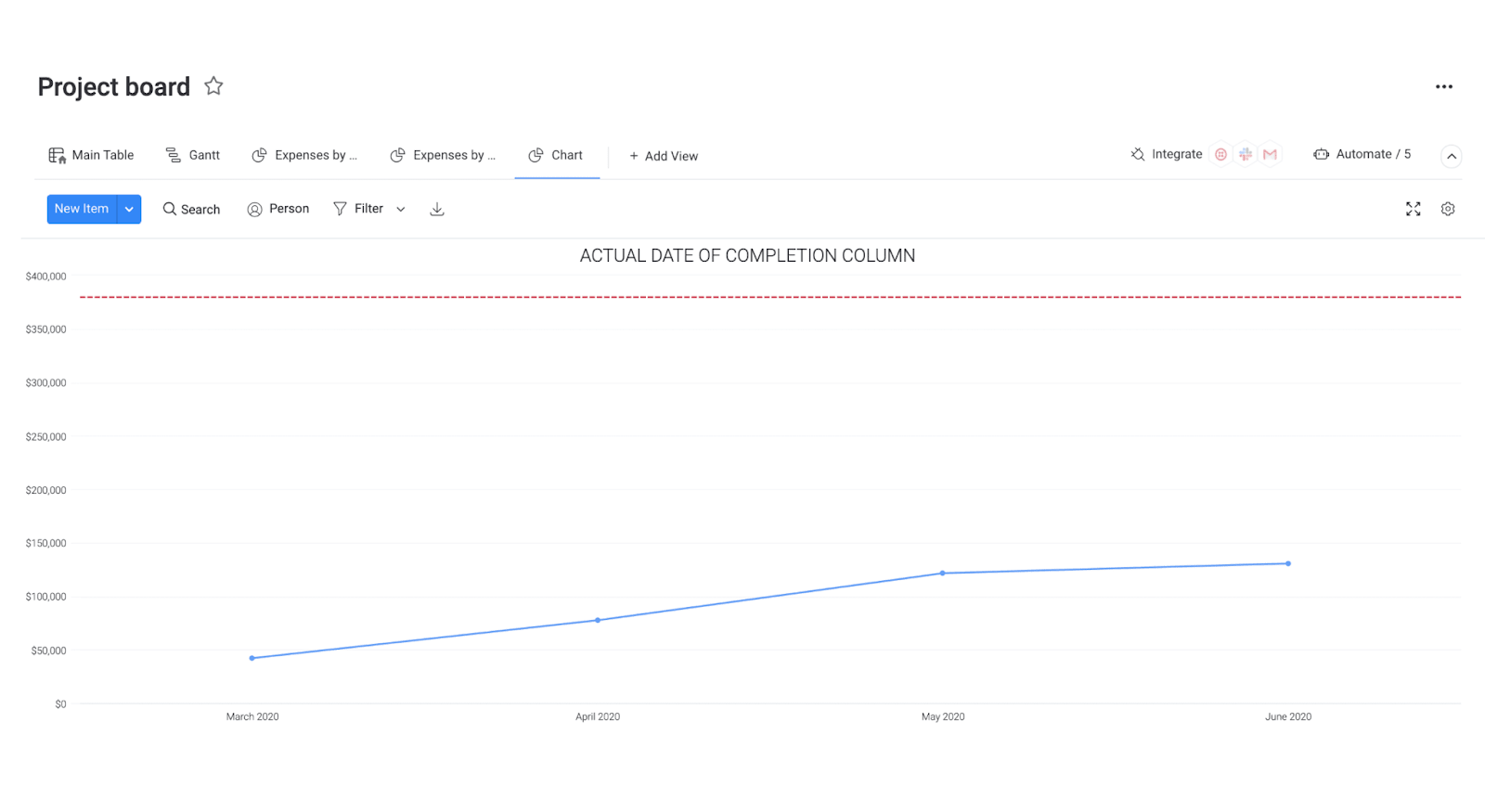When you’re working on a project, it can be easy to lose sight of the most important objectives.
As you face new challenges, a changing marketplace, and even a changing team, it’s easy for things to spiral out of control.
A critical success factor (CSF) is a management concept where you highlight necessary elements for a project to ultimately succeed.
To achieve big goals, you need to find every success factor and how they’re connected.
In this article, we’ll break down exactly what critical success factors are, show some common examples, and tell you how you can find yours.
What are critical success factors?
Critical success factors are key areas you need to master if you want to achieve a larger goal or objective, whether that’s a specific project or just selling more products.
CSFs can help you focus your team’s efforts to work more effectively on what matters most. It’s a great antidote for getting sidetracked or the lulls that often come in a longer project.
What’s the difference between a CSF and a KPI?
Like a key performance indicator (KPI), a CSF helps pave the way to project success. The difference is that CSFs often focus on more high-level concepts, not metrics or data.
To put it simply, a CSF focuses on the underlying cause of success, while a KPI measures the impact of the actions you take.
For example, if the CSF is to increase lead quality, the KPI would be the average value of new deals.
Both are useful additions to your project management toolbox.
What are the different types of critical success factors?
There are many different types of critical success factors based on your industry and other factors.
At a high level, you can categorize CSFs into 3 main types:
- Industry-specific success factors: getting featured at a specific convention, reaching a certain market, or other comparable factors.
- Strategic factors: stakeholder engagement, business partnerships, etc.
- Environmental factors: climate, potential natural disasters, local regulators, etc.
You can’t just rip off the CSFs of an unrelated company in a different industry and expect them to work.
You need to consider what can impact the success and failure of your projects and business. So consider your place in the market, unique environmental factors, and the layout of your industry.
A critical success factor only facilitates success if it’s relevant to your organization.
Why are critical factors important?
In 2021, only 55% of projects finished on time, and 27% of projects didn’t meet their goals at all, according to the latest PMI data.

A critical success factor outlines an intermediary step that you must take to reach your end goal. By prioritizing these, your team can always keep on the right track.
With CSFs, you can keep your projects on time, within budget, and on target. They can help you streamline your project management and consistently achieve better results.
What are examples of critical success factors?
An example of a critical success factor could be improving stakeholder engagement or finding a business partner in a specific region.
It depends on your industry, organization size, and other variables.
In this section, we explore different examples of success factors from different types of organizations.
What are the 5 critical success factors in project management?
There are more than 5 CSFs in project management, but experts often highlight stakeholder engagement, clearly defined project plans, and more.
| CSF | Benefits |
|---|---|
| Stakeholder engagement | You can’t veer off target if the end-users of the product, regulators, and executives are all directly involved. |
| Clear documentation | Everyone on the project team knows exactly what they need to do and when. |
| Protocols for communication and collaboration | Crush data silos before they can even develop and ensure smooth collaboration between teams. |
| Executive involvement/sponsorship | Don’t let the project lose steam because upper management forgets about it. |
| Assess and account for risks | Avoid losing the entire project budget to a surprise. |
These are general CSFs that apply to virtually any project in any industry. Your company’s projects will also have other relevant CSFs beyond the scope of this list.
What are examples of critical success factors in marketing?
In marketing, you can use a variety of CSFs depending on the channel and target of your marketing campaign.
But there are a few universal factors that you need to consider no matter what.
| CSF | Benefits |
|---|---|
| Clearly defined target audience | Craft creative with the right voice that resonates with your potential customers. |
| Customer experience — location, website usability, etc. | Capitalize on the attention you generate with the campaign, getting the maximum amount of conversions. |
| Maximize reach | Get in front of as many relevant people as possible. |
| Properly configured analytics and reporting | Accurate data gives you feedback on what works and what doesn’t. You can then reduce any wasted ad spend. |
| Prioritize customer relationships | Earn word of mouth marketing and repeat sales. |
What are examples of critical success factors in sales?
In sales, common critical success factors outline a high-level strategic plan to drive more leads and revenue.
| CSF | Benefits |
|---|---|
| Perfect marketing-sales alignment | Helps reach the right prospects and land more and better deals. |
| Maximize the number of leads | Get more chances to sell your product. |
| Improve lead quality | Increase the value of each potential deal. |
| Effective customer onboarding | A customer that actively uses your product is much more likely to stay. |
| Good account management | Increase the value of existing contracts. |
If you could master even one of these, your future sales revenue will reflect that.
3 best practices to consistently achieve your CSFs
If you’re convinced that using critical success factors in your own company will be beneficial, here’s how you can make that happen.
Determine your CSFs with the entire team.
When you’re setting goals, it’s easy to take on that role alone as a manager. But that’s not ideal.
The best way to set CSFs that resonate with your team and help guide them forward is to actually set them with your team. Different team members have different areas of expertise and bring unique insight to the table.Don’t let that go to waste.
Consider risks and roadblocks, not just assets.
When you’re setting goals, the tendency is to focus on assets and potential, overlooking risks and roadblocks.
Don’t fall into this trap. Give the potential downsides all the attention they deserve.
Consider everything that can go wrong. A project sponsor could back out, a regulator could interfere, or a competitor could launch a similar campaign before you.
There are a lot of ways a project can fail.
Use analytics and visualization to keep track of your progress.
Once you’ve set your strategic goal and CSFs, you don’t want to rely on your intuition. You want concrete data to show whether you’re headed in the right direction or not.
That’s where advanced project management software comes in handy.
Secure your project’s success factors with monday.com
monday.com is the perfect platform for maximizing the impact of your new CSFs. Our Work OS goes way beyond to-do lists for your team.
You can visualize project progress with everything from color-coded boards to Gantt charts to custom bar graphs. Use fully customizable templates and an automation builder to streamline your workflow.
Use detailed views and visualization tools to keep track of progress.
With monday.com, you have plenty of options for visualizing the state of your project.
You can use:
- Color-coded grid-view — with item status visible
- Gantt chart or timeline views
- Customer graphs and charts
- A real-time multi-board dashboard

This type of oversight is especially useful if you’re developing new technology for a project sponsor. They’ll want regular progress updates.
Share boards and reports with stakeholders and keep them engaged.
With monday.com, you can easily share board access with external sponsors and stakeholders. You can even create feedback forms so they can let your team know what they think about the direction on certain features.
If stakeholder engagement is a CSF, it’s a great way to hit 2 birds with 1 stone.
Set up custom workflows to ensure smooth collaboration.
monday.com also has advanced workflow management tools that let you control every aspect of how your team works.
You can use existing templates for several different use cases and easily customize and standardize them throughout your company.
Strategic planning is a good first step, but it’s the execution that makes all the difference.
Finding your success factors is only the first step
Not only do you have to find meaningful success factors for your company and specific project, but you also need to figure out how to realize them over time.
With monday.com, you can keep track of your success factors and project progress in general, making management a lot easier.
Try our project management template to regain control over your projects and start making meaningful headway.
